In the fast-paced world of modern marketing, orchestrating digital campaigns requires a diverse set of skills and expertise. Just like a symphony conductor brings together different musicians to create a harmonious masterpiece, digital marketing conductors play a pivotal role in coordinating various channels, strategies, and technologies to achieve marketing success. This blog post aims to shed light on the different types of conductors you might encounter in today’s marketing enterprises, each with its unique strengths and approaches to digital orchestration.

From the search maestro who commands the realm of pay-per-click advertising and search engine optimization to the social serenade conductor who creates captivating brand symphonies on social media platforms, there are specialized conductors for every aspect of digital marketing. The content virtuoso excels in crafting compelling and valuable content, while the automation maestra leverages technology to streamline processes and enhance efficiency. The experiential composer, on the other hand, creates immersive brand experiences that leave a lasting impact on the audience.
However, the ultimate conductor possesses a rare combination of superpowers from each specialized conductor. They possess the media mix prowess to seamlessly blend diverse marketing channels, the ability to rebalance resources and optimize campaigns across channels, and the holistic view to orchestrate synchronized touchpoints and deliver consistent messaging. This ideal conductor combines the best practices and strategies from each type, creating a marketing symphony that resonates with the audience, drives results, and takes your brand to new heights. Join us in exploring the world of digital marketing conductors and uncover the key qualities that make the ultimate conductor a force to be reckoned with.

Search Maestro
The Search Maestro is a digital marketing conductor who conducts symphonies of success using the search landscape. With brands like Google and Bing in their repertoire, they skillfully navigate the realm of pay-per-click advertising and search engine optimization (SEO). They meticulously research keywords, optimize landing pages, and fine-tune ad campaigns to ensure their audience finds them effortlessly. Utilizing analytics, they track search performance, measure conversions, and continuously refine their strategies for maximum impact.

Social Serenade
The Social Serenade conductor is a masterful orchestrator of social media platforms, enchanting audiences with brands like Facebook, Instagram, Twitter, Meta, TikTok, and Pinterest. They harmonize engaging content, captivating visuals, and strategic ad campaigns to create a captivating brand symphony across various social channels. Leveraging analytics, they gain insights into audience behavior, preferences, and trends, enabling them to refine their approach and create personalized experiences. Additionally, they embrace the power of micro-influencers to amplify brand messages and foster authentic connections with their target audience.

Content Virtuoso
The Content Virtuoso conductor is a maestro of compelling and valuable content. They compose blog posts, videos, infographics, and more, interweaving brands like Google and Bing to create a harmonious blend of information and creativity. By utilizing analytics tools, they track content performance, measure engagement, and gather valuable insights about their audience’s preferences. Leveraging personalization techniques, they deliver tailored content experiences that resonate deeply with their audience. Furthermore, they understand the power of short-form and 15×9 video strategies to captivate attention in a fast-paced digital landscape.

Automation Maestro
The Automation Maestro conductor is a wizard in orchestrating efficient marketing workflows. They seamlessly integrate automation tools and platforms like HubSpot and Marketo to orchestrate personalized, timely interactions with their audience. By utilizing analytics, they gain deep insights into customer behavior, allowing them to automate lead nurturing, email marketing, and personalized campaigns. They leverage account-based marketing strategies to target high-value accounts and enhance customer experiences throughout their journey. Their expertise lies in utilizing data-driven insights to optimize their automation processes continually.

Experiential Composer
The Experiential Composer conductor is a visionary in creating immersive brand experiences. They compose multisensory journeys that incorporate digital touchpoints with offline interactions, utilizing platforms like Google, Bing, Facebook, Instagram, and Pinterest. They understand the power of personalization and leverage analytics to craft tailored experiences that resonate deeply with their audience. By harnessing the influence of micro-influencers, they amplify their brand’s reach and foster authentic connections. Their strategy includes capturing attention through short-form content, utilizing platforms like YouTube Shorts, and leveraging the emotional impact of 15×9 videos.
Throughout all these personas, analytics plays a crucial role. By utilizing analytics tools and platforms, they gain valuable insights into campaign performance, audience behavior, and content effectiveness. These insights inform their decision-making process, allowing them to optimize their strategies, refine targeting, and enhance overall marketing orchestration.
The digital marketing conductors described above each excel in their respective domains, showcasing their expertise in search, social media, content, automation, and experiential marketing. However, the ultimate conductor surpasses them all by demonstrating mastery in the media mix, rebalancing, cross-channel optimization, and a holistic approach to orchestration.

The Ultimate Prodigy
The ultimate prodigy conductor is a virtuoso in the media mix, seamlessly blending different marketing channels and mediums to create a harmonious symphony of marketing efforts. They understand that no single channel can achieve optimal results on its own, and thus they skillfully combine the power of search, social media, content, automation, and experiential marketing to create a cohesive and impactful strategy.
Moreover, this conductor possesses a keen sense of rebalancing, continuously monitoring and adjusting the allocation of resources across various channels based on performance and changing market dynamics. They have a deep understanding of the importance of staying agile and adaptable, redistributing budgets, and optimizing efforts to maximize ROI and overall marketing effectiveness.
Cross-channel optimization is at the core of the ultimate conductor’s approach. They understand that each channel has its unique strengths, audience preferences, and engagement patterns. By utilizing analytics and data-driven insights, they orchestrate campaigns that deliver consistent messaging, seamless customer experiences, and synchronized touchpoints across channels. This conductor ensures that each channel complements and reinforces the others, resulting in a cohesive brand presence and enhanced customer journey.
Lastly, this conductor possesses a comprehensive view of the marketing landscape and actively seeks out innovative and emerging channels and strategies. They stay updated on industry trends, technological advancements, and consumer behavior shifts. By being forward-thinking and open to experimentation, they embrace new opportunities to connect with their audience and adapt their orchestration approach accordingly.
In summary, while the individual conductors excel in their specialized domains, the ultimate conductor goes beyond by excelling in the media mix, rebalancing, cross-channel optimization, and maintaining a comprehensive perspective of the entire marketing ecosystem. Their ability to synchronize and harmonize diverse marketing channels enables them to create an impactful and cohesive brand presence, deliver personalized experiences, and achieve exceptional results.
Want to learn more about the conductors operating in your enterprise? Contact us today.
It’s common knowledge that a strong SEO strategy is key to a successful website, but diving head first into the world of SEO can feel intimidating, especially when it seems like there are so many tactics you need to keep in mind. If you’ve ever felt lost in the labyrinth of SEO jargon, fear not! We’re here to demystify the world of SEO and set the record straight on which tactics you actually don’t need to prioritize.
- Geotagging Images: Geotagging images, or embedding location data within image files, was once believed to have a significant impact on SEO. However, search engines have evolved to become smarter in understanding the context and relevance of images without relying solely on geotags. They now prioritize other factors, such as image quality, alt text, surrounding content, and user engagement signals. While geotagging images can still be useful for certain purposes, it is not a necessary or primary factor for SEO benefit. Focusing on other aspects such as optimizing image quality, descriptive alt text, and relevant surrounding content will yield better results in terms of image SEO.
- Frequent Posting: Posting frequency alone is not a major factor for SEO benefit. While it’s true that regularly updating your website with fresh content is important for keeping your audience engaged, search engines prioritize the quality and relevance of the content rather than the frequency of updates. Instead of fixating on posting as often as possible, it’s more beneficial to focus on creating unique, compelling, and informative content that meets the needs of your target audience. High-quality content that provides value and addresses users’ queries is more likely to attract organic traffic, generate engagement, and earn natural backlinks – all of which are crucial for SEO success. Quality trumps quantity when it comes to SEO, so invest your time and effort into crafting exceptional content that resonates with your audience and aligns with their search intent.
- Link-Building Shortcuts: Search engines constantly update their algorithms to prioritize high-quality and authoritative content and have become smarter at identifying manipulative link-building practices that aim to artificially inflate website rankings. Engaging in outdated strategies, such as buying or exchanging links in bulk or participating in link farms, can lead to penalties and a significant drop in search rankings. These shortcuts also often result in low-quality or irrelevant backlinks that provide little to no value to the user. Search engines have become more adept at assessing the relevance and quality of links, favoring natural and organic link profiles. Building a network of reputable and authoritative links through legitimate means, such as creating valuable content that naturally attracts backlinks, is a more effective and sustainable approach. It’s also important to keep in mind that building a strong online presence requires trust and authenticity. By resorting to black hat tactics, you risk damaging your reputation and losing the trust of both search engines and users.
- Keyword Stuffing: One of the most common misconceptions about SEO is the belief that cramming as many keywords as possible into your content will boost your search rankings. In reality, search engines can easily detect keyword stuffing. Instead, focus on creating high-quality, engaging content that naturally incorporates relevant keywords.
- Meta Tags as Ranking Factors: Another misconception is the overemphasis on meta tags, such as meta keywords and meta descriptions. While these tags were once considered important for SEO, search engines now prioritize other factors, such as the overall content quality, user experience, and relevance of the page. While it’s still good practice to optimize your meta tags, their impact on search rankings is limited.
- Exact Match Domains: In the past, having an exact match domain (EMD) that precisely matched a keyword was thought to provide a significant SEO advantage. However, search engines now place less importance on EMDs and prioritize user experience and content relevance. A memorable and brandable domain name that reflects your business is often more valuable in the long run.
- SEO is a One-time Effort: Many people mistakenly view SEO as a one-time task or a quick fix. In reality, SEO is an ongoing process that requires consistent effort and adaptation. Search engines frequently update their algorithms, and competition is constantly evolving. Regularly monitoring and adjusting your SEO strategy is crucial to maintain and improve your search rankings over time.
It’s important to stay updated with the latest SEO practices and be wary of outdated misconceptions. By understanding these common misconceptions and focusing on effective, ethical SEO techniques, you can maximize your website’s visibility and achieve long-term success in search engine rankings.
Shortened attention spans. Optimized online search efficiency. A click-and-go world. Writers go up against all to capture reader’s attention. Everyone is trying to find something as fast as possible when we search online, so we expect efficiency in everything, including all of the copy that we read. According to user experience experts, a user will leave a webpage within 10-20 seconds.
What does this mean for you as a copywriter or journalist? You need concise, attention-grabbing content at the top of every page of your website, every blog and every article or press release. You need the eyebrow raise: an introduction that both grabs attention in a unique way and preempts reader’s need or desire. A clear, well-outlined value proposition can capture and hold user attention and help you accomplish your goals.
Introduction Essentials
Though there are different strategies for getting the eyebrow raise, a good introduction will consist of three concise parts: the point of differentiation or reader problem, the solution and the user action. You must not only capture reader’s attention but also give them what they are looking for and provide an action to take.
Raising Those Eyebrows
There are many different ways to get to the eyebrow raise moment: that moment when your user stops scanning and pays real attention to your content. We’ll walk through a few of these and provide examples that you can emulate.
Define the problem, evangelize the solution
A user scrolling a website or reading an article is almost always looking for a solution to a problem. If you can articulate that problem (maybe even for ones they haven’t recognized yet), then you can set your business or your content up as the solution. Attention and connection go hand in hand here. If your audience can read a headline and instantly relate to the problem or circumstance, you’ve got them hooked to find the solution.
For example: You’re a cybersecurity company with continuous 24x7x365 data protection. You need a way to reach customers.
An introduction that defines the problem: “Cybersecurity is a continuous battle, but you don’t have the resources for always-on, 24x7x365 reinforcements.”
And evangelizes the solution: “Luckily, we do. We provide you with the 24x7x365 data protection that you need to rest easy and focus your resources on winning new business.”
Interest-grabbing macro statement or question
Another approach to the eyebrow raise is a question or bold, overarching statement. A question can inform a reader of a need or desire they have that they might not have been considering. A bold statement can stop a scanner in their tracks. Take our cybersecurity example from earlier:
An attention-grabbing question: “Are you certain of your data defenses? If you don’t have 24x7x365 data security, you could be leaving your most important business asset exposed.” The question sows some doubt and primes the reader for a solution to this problem.
A bold statement: “Make data breaches disappear” A bold and interest-grabbing statement makes the reader want to learn more.
A series of questions or statements
We started this post with this strategy. The repetition of parallel structures (a series of questions or short statements) can capture the eye and turn a scanner into a reader.
A series of questions: “Are you certain of your data protection? Want to ensure it’s secure? Not sure where to start?” This parallel structure guides the natural progression of a reader’s thoughts toward a solution that you’ll provide.
A series of statements: “Perimeter defense. In-transit data protection. Storage encryption. All of these on their own are not enough to protect your data.” This structure not only captures the eye but also defines the “solutions” that the reader may already have and urges them to discover why they’re not good enough.
A personal or emotional appeal that sets the stage
Finally, a personal appeal or a story can help set the stage for further discovery or user action. This could take the form of a change in tone or a direct address to the reader.
Personal appeal: “We’ve all been there. Your current data protection tool isn’t cutting it and you don’t know what to do.” This strategy not only provides a problem that we will provide the solution for, but the direct address also captures attention.
Concoct the Solution
After all of these strategies, outline the solution or outcome for your readers. Provide the payout that your readers, clients or customers are looking for. Maybe that’s a list of the best ways to craft an interesting introduction or maybe it’s 24x7x365 data protection that they can afford. However, this solution should not only include what you offer, but what the practical outcome will be for them. Finishing this article will help you get better at capturing and holding your audience. Data protection will enable you to spend your resources on growing your business.
And, Action!
An attention-grabbing introduction should include an action to take. What do your readers need to do? Read on, learn more, and talk to our team – all actions you can suggest to move your readers from discovery to action.
No matter what you’re writing for, you need to capture and keep the reader’s interest. The eyebrow raise intro (in all its many potential forms) is crucial to doing this and to encourage your readers to read on, learn more and take the next step with your business.
Contact Bluetext if you’re curious about how our content marketing expertise could escalate your business.
In a time of economic uncertainty, it’s more important than ever to stay ahead of the curve as well as the competition. Stale digital marketing strategies simply won’t make the cut. Here at Bluetext, we’re committed to providing our clients with the latest and greatest when it comes to up-and-coming marketing strategies and trends. In this blog, we’ll look at five key predictions to bolster your marketing strategy in 2023.
Content Marketing in 2023
Gone are the days of strict, professional content and messaging for companies. In 2023, consumers are looking for you to empathize with them, breaking down the traditional walls that separated corporate from compassion. Lean into emotive content filled with transparency, empathy, and relatability. Your customers want to know they can trust you, especially in times of economic uncertainty when every penny counts. Ditch the sales-based pitch in your content and speak to your customers as if they were your friends.

Short-Form Video
In today’s culture, TikTok is all the rage. The average user now watches 19 hours of video content every week, and a lot of that is happening on their mobile devices, accounting for 80% of all mobile data traffic. In other words, short-form video is huge and should be taken seriously by companies heading into 2023.
Producing content specifically for TikTok, Instagram Reels, and YouTube Shorts also lends itself well to companies, as shorter content takes less time and effort to produce. Additionally, viewers are more likely to engage with a shorter video that gets straight to the point versus a video they have to sit through for 30 minutes.

Augmented Reality
Using AR in marketing campaigns was certainly on the rise in 2022 and will continue to grow in both capabilities and use as we get into 2023 and beyond, with the global AR market expected to reach $28 billion by 2028. While AR may seem to be only available to large companies with large marketing budgets like Ikea, there are opportunities for smaller companies to lean into the augmented reality trend. Even something as simple as adding augmented reality functionality to your business card could be a great way to set yourself apart from the competition. You could add buttons to text or call, include a pop-up video showing off your product, and more.

Artificial Intelligence
Although the technology behind artificial intelligence is still maturing and a sound business case is still being developed, that doesn’t mean you’re not able to jump ahead of the curve. It is predicted in 2023 that the science behind marketing data analysis will benefit greatly through AI with tools such as TensorFlow and Gretel, allowing your company to glean more information from your data than ever before and drive higher profitability.
The power of conversational AI will also continue to grow (looking at you, Chat GPT) on the back of terabytes of data, enhancing your ability to actively engage with your customers on a personalized level. Tools like Campfire and Kore are making it easier for businesses to take advantage of the power of artificial intelligence with their platform-based solutions.

Metaverse
The metaverse was certainly a trending topic throughout 2022 and will continue to make headlines into 2023 and the future. According to a recent study, 59% of consumers are excited about transitioning everyday activities to the metaverse, with a similar number of metaverse-aware companies (57%) already adopting the concept. In 2022, we saw a variety of events being hosted in the metaverse, a trend that will continue into next year via virtual tradeshows, customer experiences, and facility tours. We’ll also see an increase in metaverse use for internal business processes such as employee onboarding, training, and even company happy hours.
Advertising in the metaverse will also continue to rise in popularity as the metaverse itself continues to grow. In order to align with the metaverse ethos, ads will need to be immersive and complement the user experience, allowing advertisements to become part of the gameplay and establish meaningful engagement with users.

You may already be aware of these upcoming trends and the implications they could have for your business but unsure of how to start addressing them. Bluetext has the expertise and industry experience to help you grow your brand and implement effective changes to your marketing strategy. To learn more about our offerings, contact us today.
Every brand is a story, and marketing is your one chance to tell it. Storytelling has always been a successful way to connect brands with their audience because it creates an experience that people want to buy into. But the unfortunate truth is most adults don’t have much availability or attention for storytime like we once did as children. Competition for consumer attention has grown with the seemingly endless information and content that bombards us daily. The solution? Cut to the chase, SparkNotes it if you will. It is most effective to be concise, and engaging, and build a feeling that a consumer can buy into through micro-storytelling.
Micro-storytelling highlights what is truly important and showcases the small ideas that make a brand unique in under 30 seconds. Create a voice for your brand. In a sea of stories, you want to stand out. Catch people’s attention with vibrant colors, and an intriguing tagline, or start your video with a hook that will engage your audience. Make them pause their scrolling and soak in your information. Connect with them so they want to buy into your brand.
With micro-storytelling, the goal is not to fit everything into one video or post but to promote many smaller pieces of content that can easily be consumed at various touch points to tell potential customers what your brand stands for. Audiences want to get through information quickly, especially if they are new customers who are not yet invested in learning more about your brand. Micro-storytelling introduces people to your brand and sparks that initial interest. It’s the perfect teaser to either engage with your brand or share your information with others. It also gives new customers a way to quickly learn more about you, by encouraging them to visit your website or follow your social media accounts.
Four Fundamentals to Help You Create Micro-Stories for Your Brand
Know Your Audience
With micro-storytelling being so concise it is important to convey a tone and message that resonates with your target audience. It is essential for brands to target specific audiences and their specific needs, with a specific message. To create a successful micro-story you must research and gather information to better understand your audience and how you can authentically connect with them. Creating a trusted bond with your customers extends beyond a simple transaction, it works to build a community.
Tap into Visuals
While text helps to tell your story, visuals are a powerful way to communicate quickly with your audience. They must be eye-catching and aesthetic, and showcase your brand or products in a way that supports your brand’s story and values.
Cut the Fluff
Think of how the information you are presenting will be received by people quickly scrolling. Keep it simple. Avoid meaningless details that distract from the overall message. Use short and simple words.
Leave Them on a Cliffhanger
Try not to be definitive with your narrative’s ending. For example, when you go to post about an upcoming event or product launch, announce it in a way that teases what is coming soon. Not only does this save space and time, but it leaves your story open for interpretation and gives customers a chance to think about your brand or come back later to find out more.

Three Effective Ways for Your Brand to Promote Micro-Storytelling
Video
One of the most powerful ways to convey your message in an engaging way is through video. Instagram stories, Tik Toks, or other short-form videos provide an opportunity to convey your story in a short time and continue telling it over time. It also gives you an opportunity to tell your story through unspoken visuals. Think of who is representing your brand. What story is being told by their appearance, tone, and body language? Even what they wear can convey something about your brand story.
Social Media Updates
Another compelling way to promote your message is through social media updates. Twitter is a really valuable tool to enforce condensed character counts, which limits brands messaging into more digestible sections. This platform is also adept at piecing content into multiple updates which can be displayed throughout your timeline. This gives users a train of thought to follow the subconscious urge to continue to scroll down and piece together multiple micro-stories.
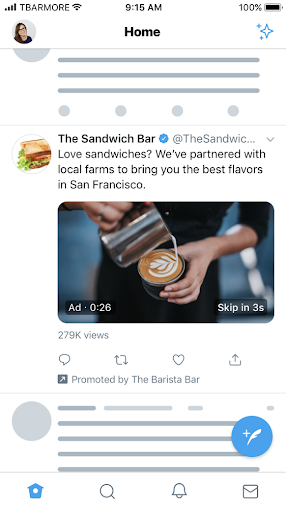
Infographics
Using infographics to tell your brand’s story creates an effective and digestible way for your consumers to get a lot of information at once. Infographics quickly highlight key takeaways using images and charts. Visuals accompanying text promote higher engagement. With important information involving statistics and facts, infographics help users absorb information with ease.
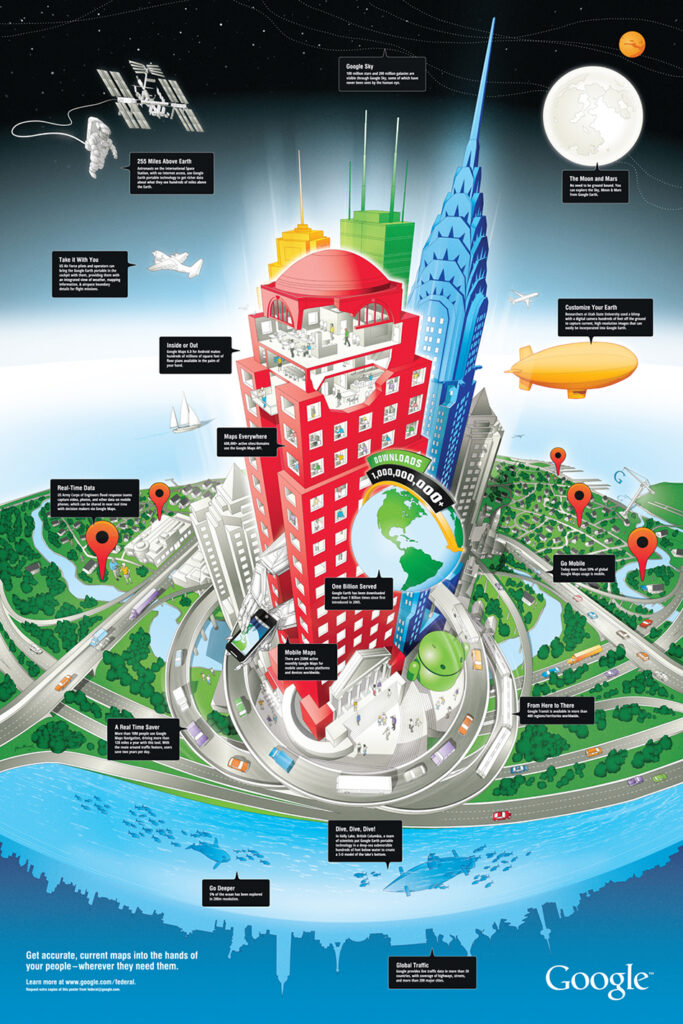
Micro-stories are just one block of the overarching brand story and when executed correctly, these micro-stories create a powerful message that resonates with consumers.
As a full-service digital marketing agency, Bluetext offers multiple services that can help your brand tailor content to meet customers’ expectations. Connect your stories to your customers. Contact us today to learn more about our messaging and content marketing services.
LinkedIn is the social platform we all associate with business, and for a good reason, it was designed for professional networking. Whether it’s your personal career or your organization’s growth, LinkedIn is made to promote success. With more than 30 million companies on the platform, LinkedIn generates more leads for B2B companies than Facebook or Twitter. With 675 million users worldwide and 303 million monthly active users, it is also a great tool to enhance your company’s brand awareness.
Before embarking on your brand awareness journey it’s essential to know your audience, and particularly what kind of content may interest them. The largest percentage of LinkedIn users are 33- to 55-year-olds, demonstrating how those who dominate the social platform are more serious career-oriented adults rather than young adults/teenagers. Likewise, LinkedIn is the number one platform for CEOs, with 94% having a social media presence on the site. It is crucial that your business maximize its presence on the platform to take advantage of its many business opportunities.

3 Tips to Increase Brand Awareness and Engagement on LinkedIn
1) Build Out Your Company Page
Next to your company website, your company’s LinkedIn page is the most important digital representation of your business. This is your chance to showcase your business in a professional online setting. One of the most common mistakes businesses make on LinkedIn is treating it like a one-and-done task. After establishing your company page, make sure to frequently update your profile to reflect the most recent and relevant attributes of your business. From location to company bios and team members keeping the profile up to date gives prospective partners, customers, and even employees the most accurate snapshot of your business to date. You may want to consider investing in LinkedIn Premium, which allows you to open your network and grow your business even further. With this feature you can see who views your profile, giving insight into who is interested in your page. From here, it is recommended that you connect with viewers to allow for further interaction.

2) Get Active
LinkedIn rewards active profiles by making them appear higher in searches. What do we mean by active? This is any sort of platform engagement, not just publishing! Therefore, your organization’s account should be adding reactions to posts, such as likes and comments. When commenting you should be thoughtful and provide responses of substance that encourage further conversation. While you should establish your own organic content schedule & strategy, not all the responsibility falls on you to properly build out a company page. You can participate in relevant conversations but re-sharing other organizations’ content, such as blogs, relevant articles, and other thought leadership pieces. Next, you should follow other companies, especially those in your industry who could potentially become partners. Overall, it is beneficial to be active on the platform and engage with other pages to stimulate the same kind of interactive environment on your own business page.

3) Join Groups
There are over 1 million groups on LinkedIn, which are always open to new members. Join groups that are relevant to your business and industry to discover relevant and related content, but also increase the chances of your content being discovered by others. Doing so filters down your audience from millions of varying interests to a more targeted niche audience. Groups connect you with people that you have something in common with. Here you can promote your content, by sharing blog posts, giving you more of an opportunity to brand yourself as an industry and topical expert.
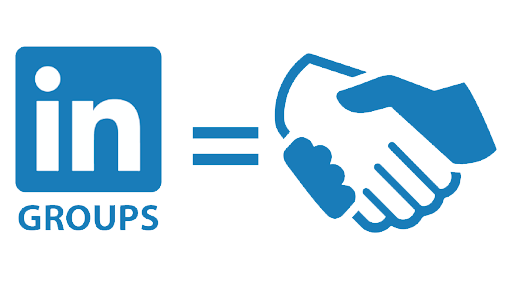
Interested in up-leveling your brand’s LinkedIn presence? Contact us to stay ahead of your competition and learn some additional tricks of the trade.
In a world where businesses are constantly challenged by a sea of sameness, bold messaging and design are crucial pieces of a marketing strategy that can propel you to the forefront of your industry. Flashy websites and digital user experiences are often the first points of contact with target audiences and are rightfully prioritized to engage users and grow brand awareness.
However, when it comes to building a sustainable and scalable brand identity the buck doesn’t stop at those brand entry points – it’s just the beginning. The all-encompassing “content” is not just a hot industry term – it’s the substance that supports every claim you make and validates your brand identity, and the way that content is presented is just as important as that first brand impression.
When it comes to presentation materials, collateral, stationery, and even internal communications, adhering to a thoughtful visual identity will go a long way in preserving and growing the value of your brand. Even non-marketing materials contribute to this. Content is essentially the foundation of your business, the legs of research and product information that your website or sales pitches stand on. Just as you wouldn’t want your home built with a hodgepodge of materials that don’t match in style and quality, you wouldn’t want your business coming across as disjointed and in-cohesive. Arm your employees with thoughtfully designed, professional-grade marketing and sales materials that continue your brand down the funnel.
In a crowded market, thought leadership content is table stakes as a marketing and lead nurturing tactic. The way that thought leadership is presented, however, is an opportunity for your brand to stand out. Bluetext was tasked with the programming and design of the Securonix brand identity which included all collateral materials for future PowerPoints, data sheets, product sheets, case studies, white papers, and stationery.

Developing a system of materials connected by a strong brand identity allows that brand story to be carried through to even this lesser-highlighted audience touchpoint. The Securonix website and user experience make an exceptional first impression, but ideally, a user would travel past the homepage into a resource or gated download. If that lower-funnel touchpoint doesn’t resemble the sophistication of a user’s first impression they will naturally become confused or skeptical. If the saying ‘put your best foot forward’ resonates, be sure to keep up the impression at every next step.
That thoughtfulness of the brand messaging and the way it influences their visual identity is carried all the way through to the layout of a data sheet. This elevates content from being just words on a page to being a valuable piece of the greater brand.
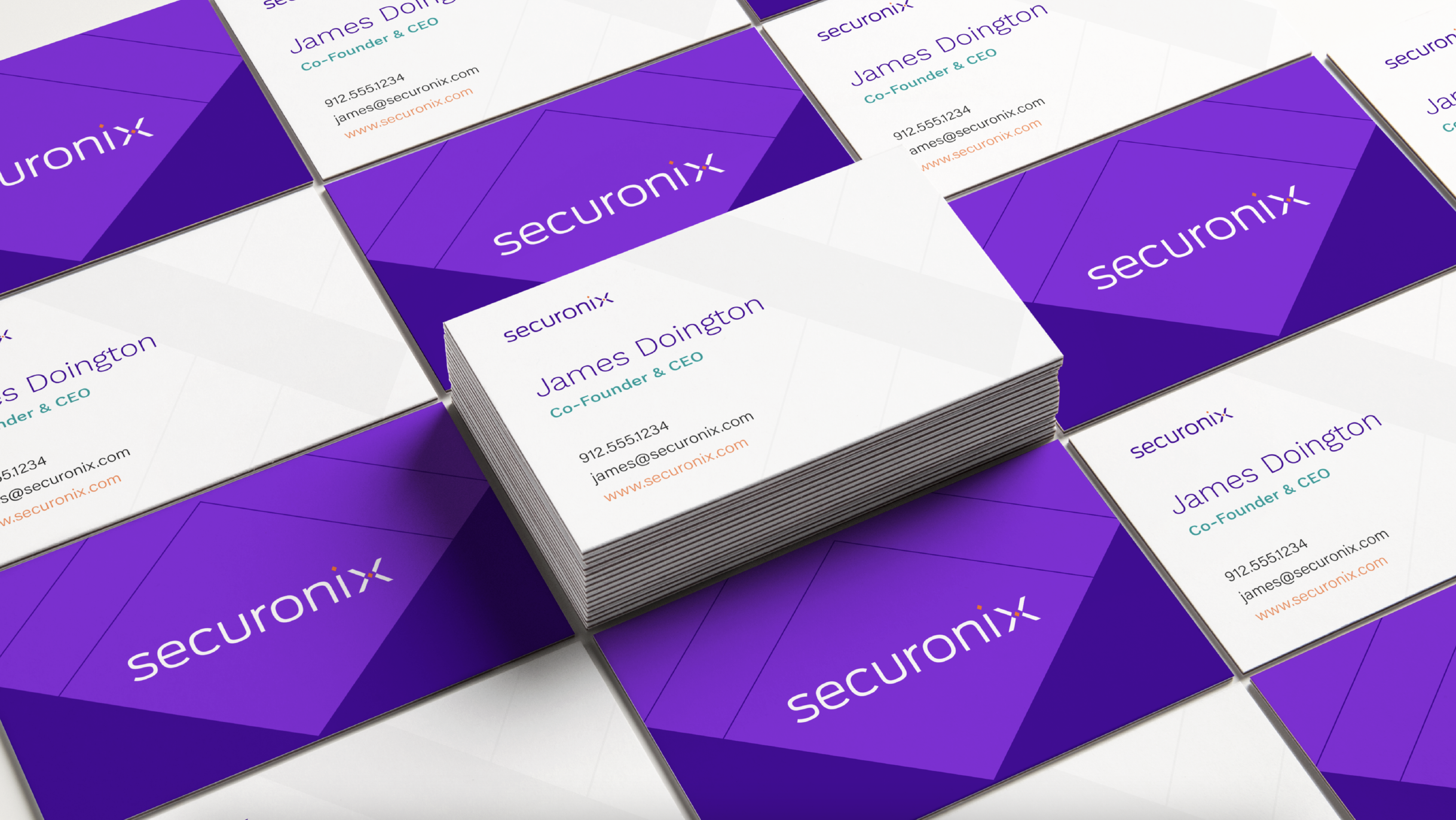
In this digital-first landscape, the expectations of B2C and B2B organizations have never been so in sync. B2B audiences and stakeholders don’t just expect high-quality and accurate information, they also expect to be wowed by its presentation. Packaging impressive statistics or insightful thoughts on industry trends in a way that is consistent with your visual brand while also considering the optimal layout that makes that information most impactful is crucial in differentiating that content as well as maintaining your brand identity.
Content is one of your organization’s most valuable marketing and lead-nurturing tools – ensuring that it can stand out in the crowded market is critical in taking your business to the next level. Contact Bluetext if you’re interested in revamping your B2B content marketing strategy.
Picture this: the year is 2013, Twitter is exploding into the public conscious with more than 200 million active users, and Facebook has a vice-grip on people’s free time across the globe. Social media, once considered an afterthought in any brand marketing strategy, is now on center stage. A fresh frontier to engage with current and potential customers in a way that no form of advertising has done before. Any brand worth its salt hires swathes of fresh-faced analysts to form social strategy teams and capitalize on the opportunity social media marketing presents. But, as with any emerging space, the way forward is not yet clear, and many brands are hesitant to make a bold leap into the unknown. Social media strategies are conservative and in line with traditional marketing: infographics are reposted on Instagram, product launches are promoted on Twitter, and brand Facebook pages are little more than an index of ads that have already run elsewhere. Despite social media platforms’ more casual formats, brand language is still tightly controlled and diluted with formality. The marketing world might be entering a new era, but the big brands still aren’t ready to give up their old tricks.
Now flash forward to 2022: the official Wendy’s Twitter account is telling people to smuggle Frosty’s into children’s movies, Arby’s Instagram is promoting a collab with famous rappers, and Slim Jim is furiously pushing a movement called #LongBoiGang. As a rational and well-adjusted person, you might be asking yourself how we got here? The answer, my dear reader, is memes.

What is a Meme?
So what exactly is a meme? Richard Dawkins first coined the term “meme” in his 1976 book The Selfish Gene to refer to how ideas evolve and are shared across different cultures. Under this broad definition, everything from urban legends to famous sayings could be memes. But, as the Internet began to connect people worldwide, the free exchange of information accelerated like crazy. It opened the door for new methods of conveying ideas, specifically memes as we know them today.
Modern memes can be broadly defined as pieces of media that are copied (often with slight variations) and spread rapidly by internet users. From a conflicted superhero to a distracted boyfriend, these images are retitled and reused by Internet users to comment on everything from personal events to pop culture moments. But it’s not just picture templates that can become memes: halftime shows, hashtags, and even celebrities can all be the inspiration behind Internet memes.
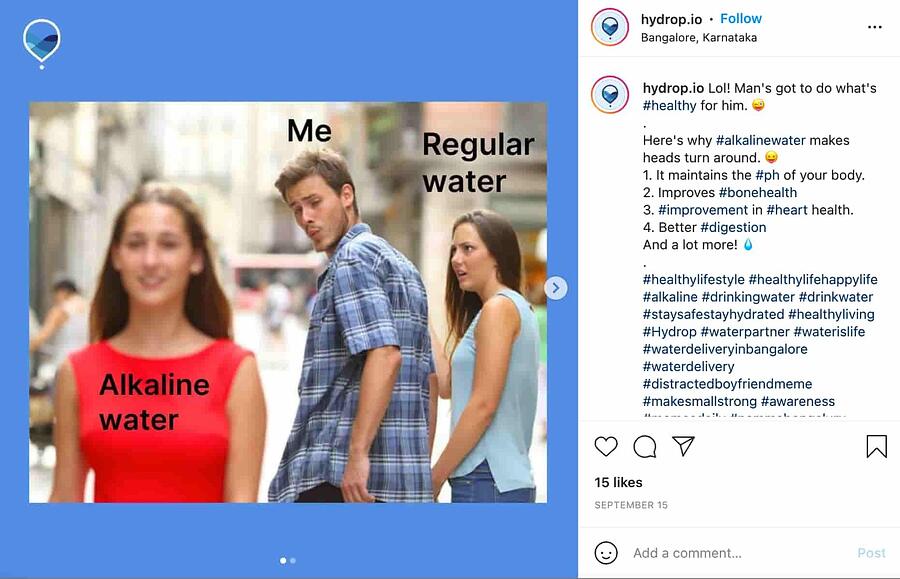
How Memes Can Benefit Your Brand
But even after being caught up on the history that made memes what they are today, you might still be asking yourself, what can they do for me? Here are four benefits that meme marketing can bring your business.
- Expanding your Engagement – Internet users spend an estimated 145 minutes daily on social media. They’re online to scroll through their pics, jokes, and videos while tuning out everything else around them, meaning you have the chance to capture their undivided attention. Meme marketing also opens the door to even more potential impressions through functions like shares, retweets, and comments.
- Keeping Consumer Attention – Social media users are highly resistant to traditional advertising on their favorite platforms, viewing unprompted commercials and ads as intrusions, not opportunities. But by sharing memes about your brand you can seamlessly slip into their content stream and cultivate more organic user interactions.
- No Price Promotion – The most enticing aspect of meme marketing is that it doesn’t cost a thing. Although hiring social media professionals or paid influencers can do a world of good, anyone up to date on current trends can join the fun post.
- Revealing your Relatability – One of the greatest struggles many companies have with managing their brands is appearing too outwardly corporate or robotic. Memes present a perfect opportunity for brands to communicate with consumers more casually and forge more personal connections in the process.
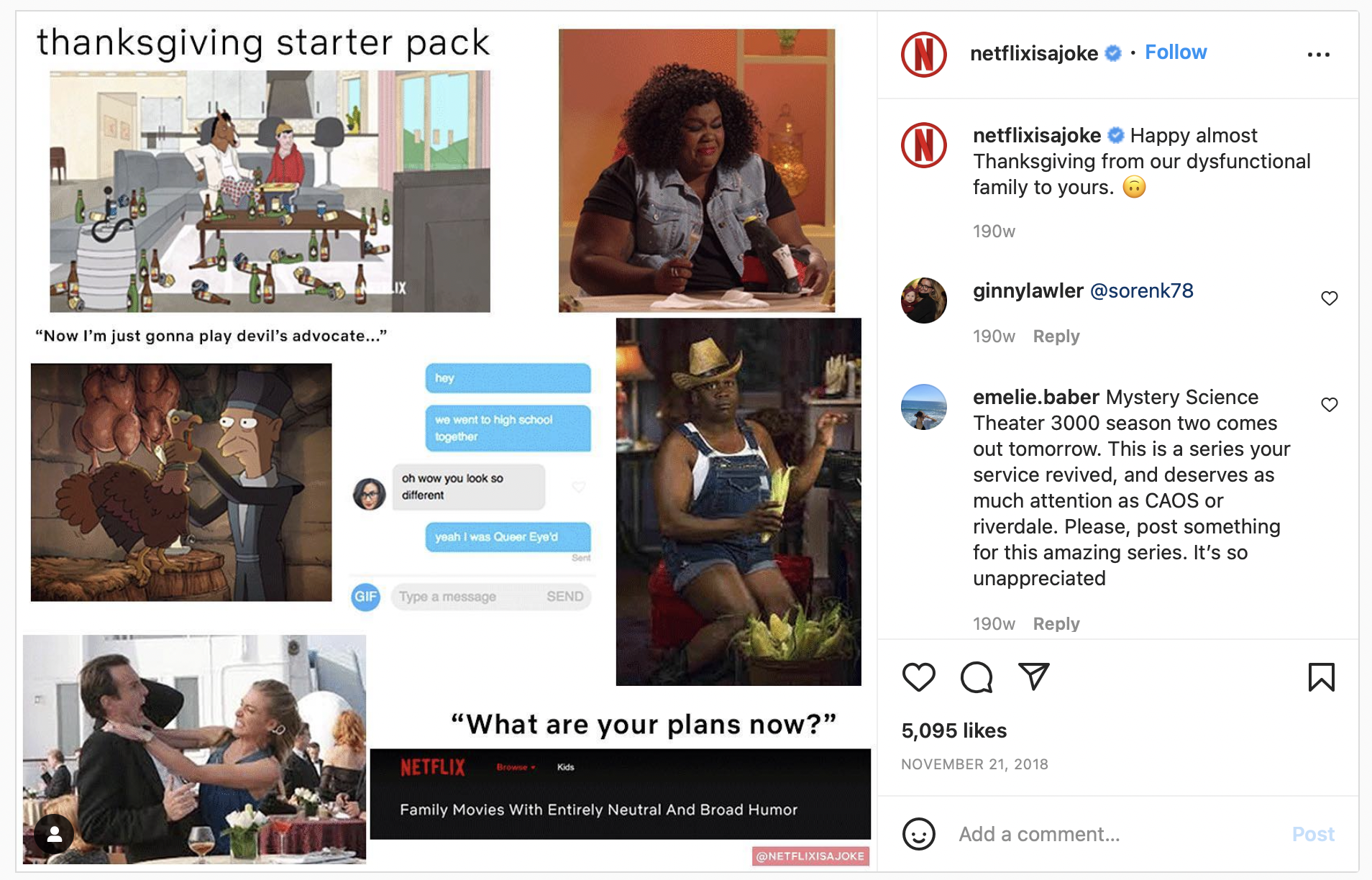
B2B Meme Marketing Inspiration
From forums like Reddit to social hubs like Twitter and Instagram, much of the content that keeps users returning to popular platforms are memes. If you want to meaningfully engage with consumers in these channels and build a social media strategy that isn’t stuck in the stone age, you’ll need to learn how to make memes. Here are a few examples of brands that succeeded in meme marketing to get your creative juices flowing!
- HubSpot – Fan favorite movies and TV shows present a treasure trove of possibilities for memes that social media users can recognize and connect with.
- RevGenius – Industry/category-specific memes can add a focused and personalized flair to your company’s social media presence.
- Adobe Marketo – Some companies even integrate memes into their trade show/event promotion like this make-your-own meme booth that Adobe Marketo featured to pump up engagement both online and at the event.
Want to take your social media strategy to the next level? Bluetext can help optimize your social media program and ensure you get the most out of your marketing.
Picture this. It’s a Friday night, and you’re deciding where you want to eat dinner. As you walk down the street, you’re overwhelmed by an abundance of options. Storefront posters shout weekly specials, stapled flyers advertise happy hours, promoters beckon passersby into newly opened spots, all merging into a blur of sensations.
But then, you hear it, your favorite song playing amidst the thrum of the busy street. You follow the sound to a restaurant you hadn’t noticed on the first pass, where the music continues to bump along on outdoor speakers. From the patio, you catch the smell of fresh food leaving the kitchen, getting your stomach growling and enticing you further. Stepping inside, a waiter passes by, carrying your favorite dish to a nearby table. Taking in the room’s ambiance, you turn to your friends and proclaim you’ve found tonight’s spot.
Now you’re probably wondering why I’ve had you go through this foodie fantasy with me. Part of it might be that I’m writing this blog around lunchtime and can’t help but steal glances out the window at our neighborhood sushi spot while I type. But more importantly, it serves as a perfect analogy to illustrate the value of inbound marketing and what it can do to improve lead generation for your business.
So What IS Inbound Marketing?
Inbound marketing is a methodology centered on drawing potential customers to your brand instead of trying to push your brand out in the market. Rather than utilizing external marketing tactics like TV ads, billboards, and flyers, an inbound marketing strategy seeks to attract customers by creating valuable content and experiences catered to them. Put broadly, outbound marketing brings your offering to your prospects, while inbound marketing brings your prospects to you. In doing so, you guide potential customers to your website with a pre-established positive impression—making it more likely that they’ll go with your product or service when they’re ready to buy.
Inbound marketing is content-led and hinges on providing potential customers with content that is genuinely meaningful to them. Because of its content-led nature, inbound marketing boosts SEO and organic traffic acquisition and builds trust and credibility in your brand by positioning your company as a thought leader in the market. Throughout the customer journey, the goal of inbound marketing is to add value. To be successful, you must attract users to your website with relevant and high-quality content, engaging with them and clarifying your value proposition. You must also delight users by acting as a reliable partner with a vested interest in their long-term success.
Building Your Inbound Marketing Strategy
Proper planning and optimization will be critical to the success of your inbound marketing program. Creating compelling content is about strategic planning and commitment rather than budget. You can’t just throw money at content creation and expect to come away with something compelling, you have to put your head and heart into the work. With that in mind, here are some thought-starters to create and maintain your inbound marketing strategy.
Know Your Audience and Space
Defining your business goals and buyer personas should be the genesis of any inbound marketing effort. You can’t write content to inform your customers until you’ve identified your target audience and learned all you can about them.
In the same vein, choosing the right platforms to distribute your marketing materials on will be critical in ensuring your content reaches the right prospects. Determine the best way to reach your target audience, whether through Twitter, Pinterest, Facebook, your blog, or elsewhere, to ensure your content gets to the right prospects.
Create a Journey Worth Taking
With effective inbound marketing, there should never be a dull moment in the customer journey, from impression to engagement. Aim to provide content across the customer experience. Preemptively answer the questions prospective customers will likely have at each stage of their buying journey. What makes you unique? Why should they listen to what you have to say? Successful inbound marketing tells prospective customers a unique and compelling story about your brand from first sight to final sale.
Consistency is Key
Inbound marketing is a game of consistency. Maintaining a constant stream of content tailored to your market’s current pain points and questions supports you in staying relevant and building your brand’s perception as a trusted thought leader. To effectively support your inbound marketing strategy, prioritize creating and executing on a content calendar without fail. A set schedule ensures relevant content will consistently engage your audience and keep your brand fresh in consumers’ minds. And in case you need more convincing, a 2021 Hubspot study found that brands who publish blog content at least 16 times a month generate 3.5x more website traffic and 4.5x more leads than companies that only update their blogs a few times a month.
Measure the Metrics that Matter
There’s a plethora of metrics to choose from when measuring the success of your inbound marketing strategy. From analyzing SEO rankings to measuring inbound links, these resources give valuable insight into how your campaigns perform. Prioritize regular auditing and analysis of these metrics while managing your inbound marketing to understand how effective your efforts have been and see how they can improve. If particular topics are gaining the most traction with viewers, concentrate on these areas and find unique ways to expand upon. If certain content is not generating or retaining enough attention, there is your sign to pivot.
Inbound Inspiration
Now that you’ve got your strategy set and these best practices behind you, here are some examples of engaging online content to fuel your inbound marketing efforts.
Blog
A mainstay of content creation, blogs are the perfect way to answer your prospects’ pressing questions or pique their interest with accessible long-form content. According to HubSpot, marketers who prioritize blogging are 13x more likely to get a positive ROI than those who don’t.
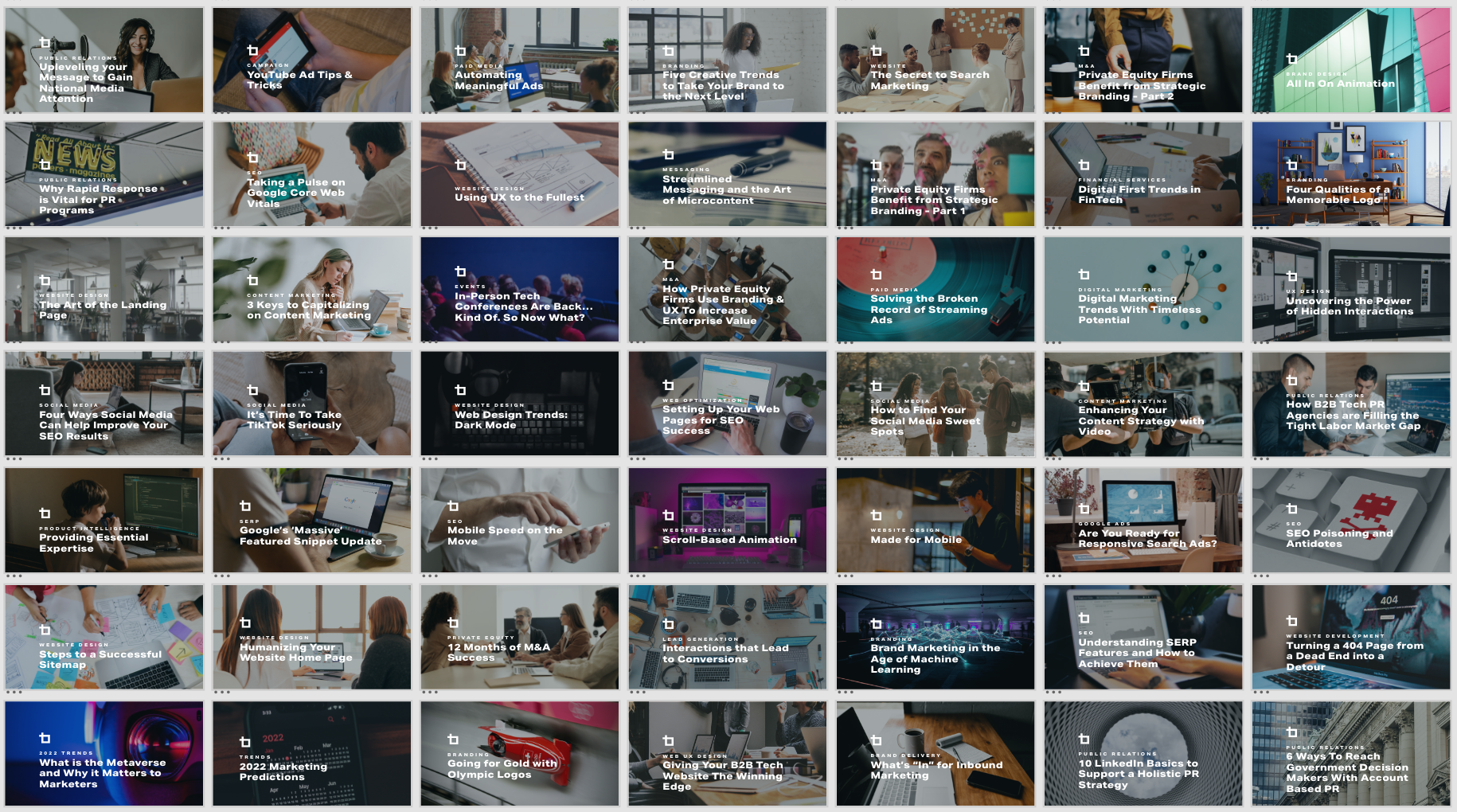
Case Studies
Imagine that you’re the owner of a growing business in the market for a piece of cybersecurity software that you’re unfamiliar with. You sort through an endless stream of ads and webinars talking about concepts and capabilities that all fly over your head, leaving you utterly lost. But while browsing through one company’s website, you come across a case study telling the story of a company eerily similar to yours. Reading their testimonial and hearing how transformational the software has been for them, you can’t help but think that it could do the same for your business. Emboldened by the relatable success story, you confidently choose to purchase the cybersecurity software.
That’s the power of a case study. Allowing you to focus on different customer personas in your market, case studies sway fence-sitting customers with highly-tailored promises of success.

Infographics
As helpful and engaging as written content can be, people don’t always have the patience to sit down with 1000 words about humanized homepages. Often, prospective customers just want a quick snapshot of insightful data packaged in an easily digestible and aesthetically pleasing format.
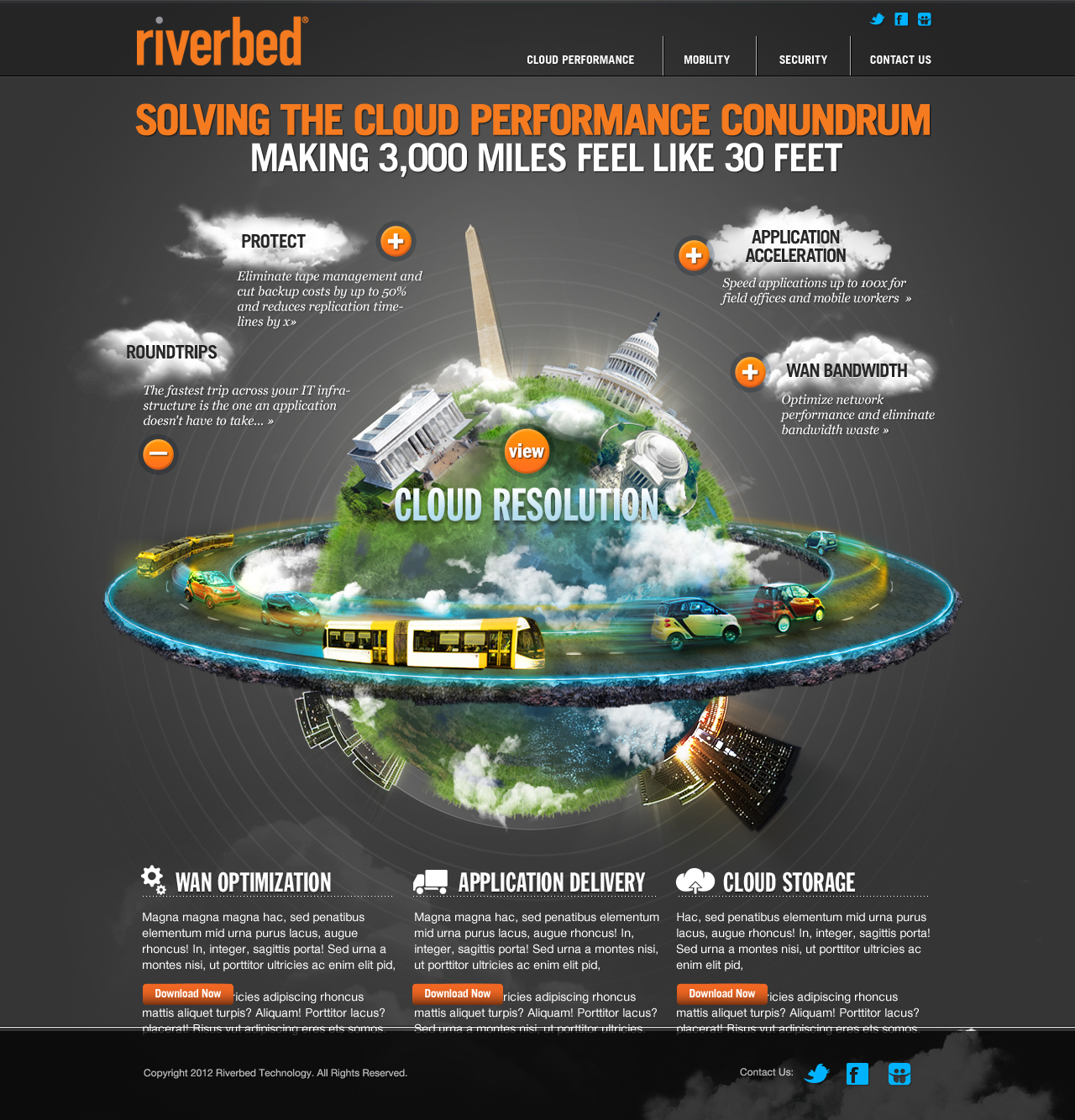
Webinar
It isn’t always easy to inject your brand’s personality into written content. While more informal content like blog posts have some wiggle-room, highly polished pieces like whitepapers and case studies often lose the human voice behind your brand.
That’s where webinars come in. Webinars-an internet seminar presenting lecture-style content to an exclusive audience-create the feeling that your brand is in direct conversation with prospective customers. They let consumers connect with the people powering your company rather than interfacing with an impersonal business entity. Additionally, the ability to request information from prospective customers for entrance to the webinar serves as a phenomenal lead generation tactic.
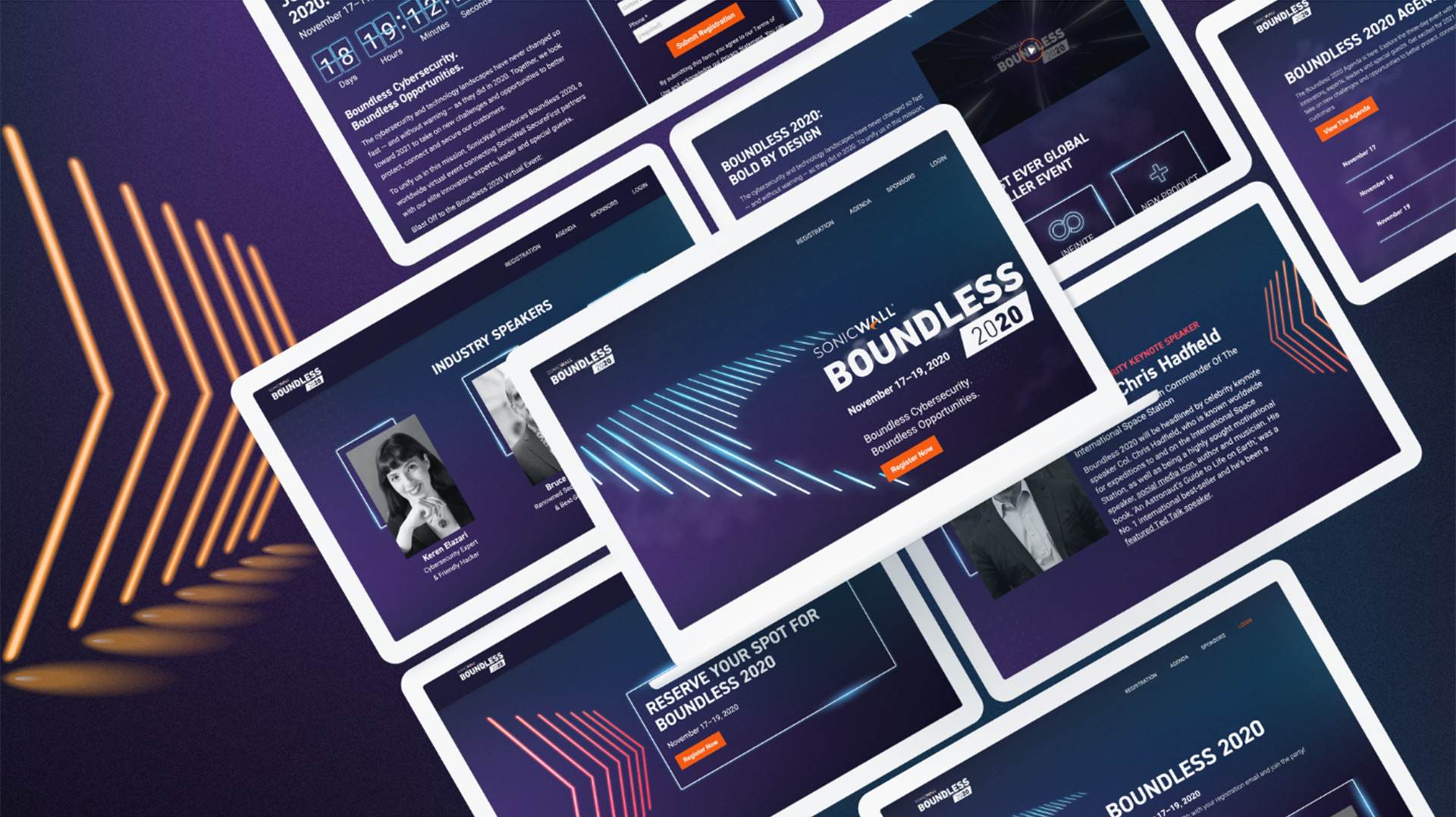
Video Series
It’s no secret that video content is an enormous part of marketing. It’s engaging, constantly growing, and makes up the majority of content audiences across industries are digesting on platforms like TikTok, Facebook, Instagram, and Youtube. But a key trend to capitalize on with your video content lies in its size.
While written content benefits from long-form structure, video content functions best when bite-sized. While things can vary based on platform or user persona, a general rule is that social media users will lose interest in videos longer than a minute or two.
No matter what path you decide to take your inbound marketing strategy down, Bluetext offers expert advising and cutting-edge capabilities to ensure you’ll have everything you need to succeed. Contact us to learn how inbound marketing can grow your business.
Since late last year, the technology industry has been alight with news and developments surrounding the Metaverse. Companies large and small are betting big on what is seen by many as the successor to the internet. Microsoft’s record-breaking acquisition of Activision Blizzard has been seen by many as a Metaverse play. The likes of Facebook have even restructured their entire organization and established a new parent company, Meta, named after the Metaverse.

But what exactly is the Metaverse? In simplest terms, “The ‘metaverse’ is a set of virtual spaces where you can create and explore with other people who aren’t in the same physical space as you.” If you’re still confused, that’s okay. The Metaverse is constantly evolving as more and more companies invest in the concept. Chances are you’ve already experienced flavors of the metaverse but may not have even realized it. To break it down, major players in the technology industry are looking at the Metaverse from a capabilities perspective for the likes of:
- Real-time 3D graphics
- Feature sets that overlap with real-world activities
- Personalized avatars unique to each user
- Person-to-person social interactions that are less competitive in nature and more goal-oriented compared to stereotypical games
- Designs best well-suited to virtual and augmented reality headsets
- Links with outside economic systems so people can profit from virtual goods

Regardless of how you feel about the Metaverse and its capabilities, there’s no denying that AR/VR is growing more popular. In 2021, it was estimated that approximately 85 million users experienced AR or VR at least once a month. Virtual reality headsets, which were originally intended for gamers back in the 1990s, have picked up momentum in the past decade as companies are releasing sleek, futuristic consumer headsets and applications. That userbase will only continue to grow as VR/AR devices become more accessible from a cost and usability perspective. Given the fluidity of the concept of the Metaverse, the marketing opportunities are truly endless at the moment. Below, we take a look at just a smattering of ideas for marketing in this next generation of the internet.
1. Gamifying your Brand
As we’ve discussed before, gamification is the act of taking a process that already exists and applying game mechanics to make it more engaging. Given the current state of the Metaverse and its existing uses, gamifying a brand is the first natural step we’ll see companies take as they expand their reach into this additional marketing channel. We’re already seeing some companies dive headfirst into brand gamification in the Metaverse. To promote the new Nike React Flyknit running shoe, Nike created its own virtual world, called Reactland, allowing users to create avatars of themselves and then navigate through the game’s forests and rooftops while jogging (in real life) on a treadmill for three minutes.

2. Parallel Metaverse Marketing within Real-Life Marketing
Just as we create physical manifestations of digital marketing campaigns, marketers need to be ready to expand their focus to the Metaverse as a third component of any future campaign. Campaigns targeting millennials and Gen-Z’ers will comprise the majority of initial Metaverse marketing campaigns, as these audiences are the predisposed primary users of the platform. Experiential marketing will also be a major component of any Metaverse marketing campaign, offering branded installations and events that users can interact with, as opposed to just placing simple ads.
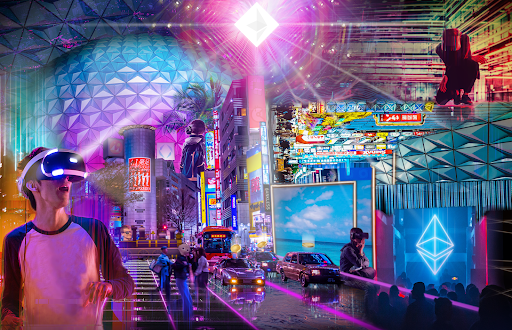
3. Harness the Power of Facebook’s Meta
While Facebook is still in the early stages of rolling out its Metaverse to consumers, there’s a good chance that any experience will include digital advertising and in-experience transactions. Anything from building virtual stores, hosting immersive events, or creating Facebook Ads will no doubt be considered. Additionally, we’ll definitely see comparable offerings from other companies staking their claims in the Metaverse hype such as Walmart and Microsoft.
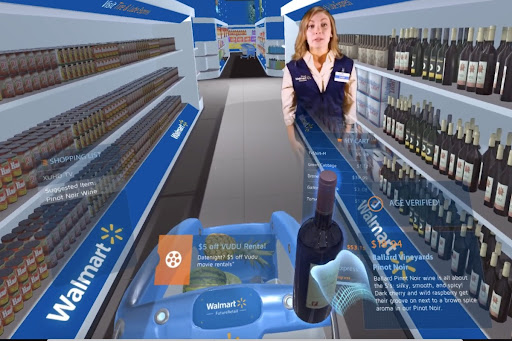
It’s fair to say that the Metaverse in its current state is filled with uncertainties. While many companies are pouring tons of capital into the space, no one knows what it will look like in five to ten years, let alone next year. That being said, it will be important for marketers to stay in the loop and decide when might be the best time to stake their own claim in the Metaverse. Interested to see how Bluetext is taking advantage of up-and-coming technologies on behalf of our clients? Contact us.